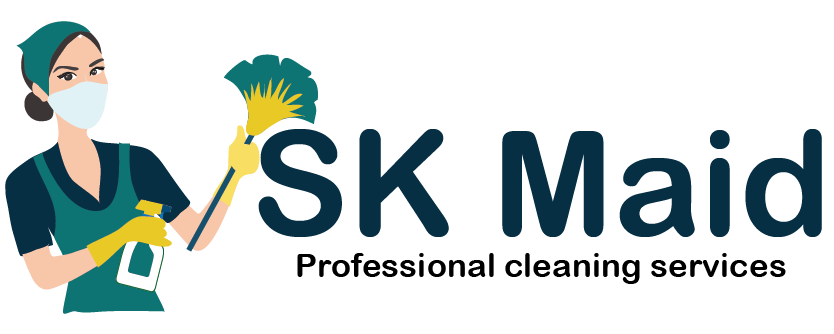Your mattress is an essential piece of furniture for your home. Did you know that your mattress can be a breeding ground for dust mites, bacteria, and allergens? These can have a significant impact on your health and well-being, including poor sleep, allergy problems, and other issues. That is why mattress cleaning is more than simply an aesthetic choice; it is critical for maintaining a healthy sleeping environment and getting a good night’s sleep.
Regular cleaning not only enhances the beauty of your bed but also has a number of health benefits, such as fewer allergy symptoms, better indoor air quality, and a more peaceful night of sleep.
In this blog post, we will look at the importance of mattress cleaning for a Good Night’s Sleep, discuss the multiple benefits of a clean mattress, and provide you with step-by-step directions for cleaning your mattress efficiently. Whether you have a soiled mattress, dust mites, or just want to extend the life of your mattress, we have you covered. So, let’s get started!
The Science of Mattress Cleaning
The breeding ground for bacteria
Your mattress is more than just a place to sleep; it’s a breeding ground for germs, fungi, dust mites, and allergens. These microscopic critters flourish in the warm, moist environment of your mattress, multiplying quickly over time. A mattress can often contain millions of these bacteria, putting your health in danger.
The Effects of Microorganisms on Your Health
The effects that these germs can have on your health should not be disregarded. Dust mites, for example, feast on the dead skin cells that we naturally shed throughout the day. As they do so, they emit allergens into the air, leading to symptoms such as sneezing, a runny nose, and itchy eyes. Bacteria and fungi can also release hazardous compounds into the atmosphere, leading to respiratory troubles, headaches, and other health problems.
Understanding Dust Mites
Dust mites are small insects that live on your mattress, bedding, and upholstered furniture. They feed on the dead skin cells that we normally shed, leaving behind feces and shed skin. Some people may experience allergic symptoms and find it difficult to sleep well.

Benefits of Cleaning Your Mattress
Improved sleep quality
Your mattress is an essential aspect of your bedroom and plays an important role in getting a good night’s rest. However, over time, it may become a breeding ground for allergies, dust mites, and other toxins. This is why expert mattress cleaning is critical for ensuring a healthy sleeping environment.
Dust, perspiration, and other human fluids can accumulate on a mattress, making it a breeding ground for dust mites, which can cause allergies and asthma. Furthermore, the buildup of sweat and other human fluids can cause the mattress to emit unpleasant scents. Professional mattress cleaning can help eliminate allergies and impurities from your mattress, leaving it fresh and clean.
Professional mattress cleaning can also help increase the longevity of your mattress. Over time, dirt and debris can cause the mattress to wear and lose shape. Regular professional cleaning can assist in eliminating dirt and debris from your mattress, keeping it in good condition for longer.
One of the most efficient ways to clean a mattress is with steam. Hot water and a specialized cleaning solution are used to remove dirt and stains, sanitize the mattress, and eliminate undesirable odors. Furthermore, the procedure is environmentally benign and safe for both consumers and the environment.
It is crucial to note that professional mattress cleaning should be performed on a regular basis, at least once a year, to maintain a healthy sleeping environment and increase the life of your mattress. Furthermore, if you suffer from allergies or asthma, your mattress may require more frequent cleaning.
Reduced allergy symptoms
Allergies can cause significant discomfort, particularly during sleep. Dust mites, dead skin cells, and other allergens can trigger symptoms such as sneezing, a runny nose, and itchy eyes, making it difficult to sleep well. Regularly washing your mattress and bedding helps remove allergens and reduces your exposure to them.
Improve indoor air quality
Your mattress influences the air quality inside your home, particularly regarding allergies and other pollutants. Dust mites, germs, and other microorganisms that may reside in your mattress can emit hazardous substances into the air, causing respiratory troubles and other health concerns.
Regularly cleaning your mattress helps minimize pollutants and enhance indoor air quality. This not only keeps you and your family healthy but also creates a more comfortable and clean sleeping environment.
Longer lifespan for your mattress
Cleaning your mattress not only improves its health but also increases its longevity. Dirt, dust, and other particles can accumulate on the surface of your mattress over time, resulting in wear and tear.
Regular cleaning helps remove this buildup, protecting the quality and longevity of your mattress. By investing in frequent cleaning, you may extend the life of your mattress, providing a comfortable and supportive sleeping surface for many years. Given the cost of mattresses, it is prudent to maintain your investment by washing them on a regular basis.
How to Clean Your Mattress
Step-by-step guide to mattress cleaning
your mattress may seem like a difficult process, but with the appropriate methods and materials, it can be a snap. Here’s a step-by-step guide to help you keep your mattress in excellent condition:
• Begin by removing any bed linens, such as sheets, blankets, and mattress covers.
• Use your vacuum cleaner’s upholstery attachment to remove debris, grime, and dust from the mattress’s surface. Pay particular attention to the seams, crevices, and buttons.
• Spot clean any stains or spills with a mixture of water and mild detergent. Avoid using hot water, as this might cause discoloration.
• For a deeper clean, consider washing your mattress cover in a washing machine using cold water. This is a good idea to do every three to six months.
• Once you’ve finished cleaning, let the mattress air out for several hours before replacing the bedding.
Tips for Keeping a Clean Mattress Over Time Here are some
excellent suggestions for keeping your mattress clean over time:
• Use a mattress protector to prevent dust, dirt, and allergens from entering the mattress.
• Regularly wash your bedding to eliminate dirt, sweat, and oils that have accumulated over time.
• Clean your mattress at least once a month to remove debris and dust mites.
• Avoid eating or drinking in bed to lessen the likelihood of spills and stains.
• Rotate your mattress every six months to guarantee equal wear and tear.

Importance of Using the Right Cleaning Products
When it comes to cleaning your mattress, you must use the proper cleaning products. Avoid using harsh chemicals, bleach, or vinegar, which might damage the mattress’s surface. Instead, use a mild detergent that is safe to use on fabrics. If you are unclear about which products to use, always study the instructions!
Final Thought
Finally, keeping a clean mattress is beneficial not only for appearance but also for health. A clean mattress can help you sleep better, minimize allergy symptoms, improve indoor air quality, and increase the life of your mattress. Regular cleaning with the appropriate materials and expert cleaning services, as well as safeguarding your mattress with a mattress cover, is essential for maintaining a sanitary sleeping environment. To get a better, healthier night’s sleep, make mattress cleaning a priority in your home care regimen.
At SK Maid, we have a trained team of experts ready to assist you in restoring your mattress to feel and look brand new. Get in touch with us today.

